Rafael T. Sousa
When Avatars Have Personality: Effects on Engagement and Communication in Immersive Medical Training
Sep 17, 2025
Abstract:While virtual reality (VR) excels at simulating physical environments, its effectiveness for training complex interpersonal skills is limited by a lack of psychologically plausible virtual humans. This is a critical gap in high-stakes domains like medical education, where communication is a core competency. This paper introduces a framework that integrates large language models (LLMs) into immersive VR to create medically coherent virtual patients with distinct, consistent personalities, built on a modular architecture that decouples personality from clinical data. We evaluated our system in a mixed-method, within-subjects study with licensed physicians who engaged in simulated consultations. Results demonstrate that the approach is not only feasible but is also perceived by physicians as a highly rewarding and effective training enhancement. Furthermore, our analysis uncovers critical design principles, including a ``realism-verbosity paradox" where less communicative agents can seem more artificial, and the need for challenges to be perceived as authentic to be instructive. This work provides a validated framework and key insights for developing the next generation of socially intelligent VR training environments.
AI-Driven Early Mental Health Screening with Limited Data: Analyzing Selfies of Pregnant Women
Oct 07, 2024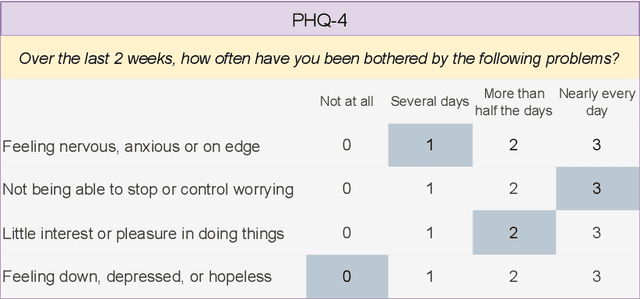
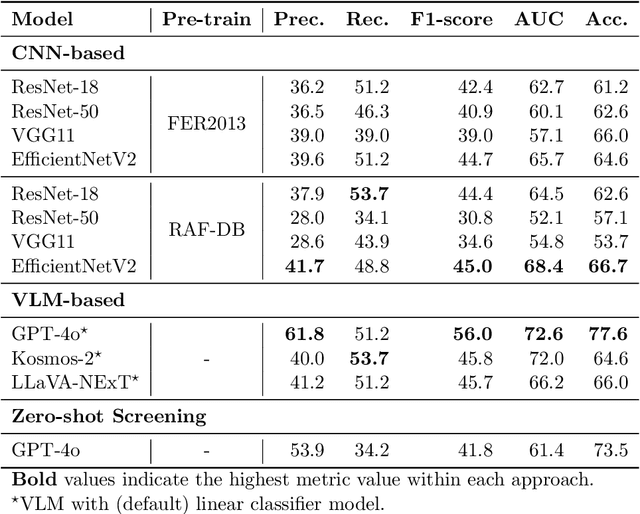
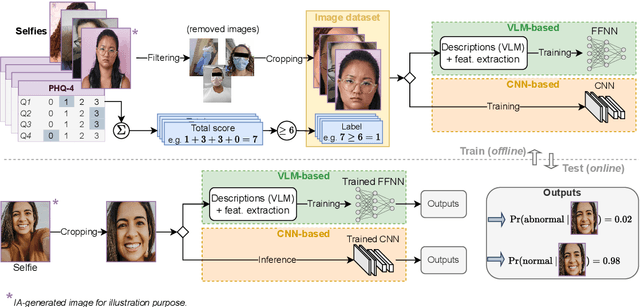
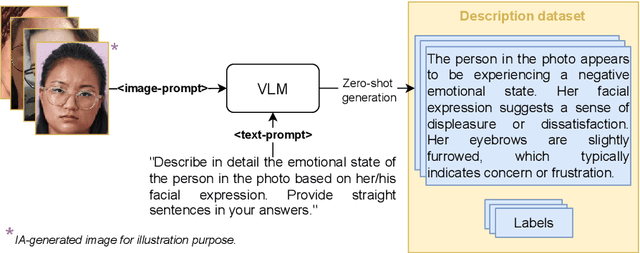
Abstract:Major Depressive Disorder and anxiety disorders affect millions globally, contributing significantly to the burden of mental health issues. Early screening is crucial for effective intervention, as timely identification of mental health issues can significantly improve treatment outcomes. Artificial intelligence (AI) can be valuable for improving the screening of mental disorders, enabling early intervention and better treatment outcomes. AI-driven screening can leverage the analysis of multiple data sources, including facial features in digital images. However, existing methods often rely on controlled environments or specialized equipment, limiting their broad applicability. This study explores the potential of AI models for ubiquitous depression-anxiety screening given face-centric selfies. The investigation focuses on high-risk pregnant patients, a population that is particularly vulnerable to mental health issues. To cope with limited training data resulting from our clinical setup, pre-trained models were utilized in two different approaches: fine-tuning convolutional neural networks (CNNs) originally designed for facial expression recognition and employing vision-language models (VLMs) for zero-shot analysis of facial expressions. Experimental results indicate that the proposed VLM-based method significantly outperforms CNNs, achieving an accuracy of 77.6% and an F1-score of 56.0%. Although there is significant room for improvement, the results suggest that VLMs can be a promising approach for mental health screening, especially in scenarios with limited data.
Improving Irregularly Sampled Time Series Learning with Dense Descriptors of Time
Mar 20, 2020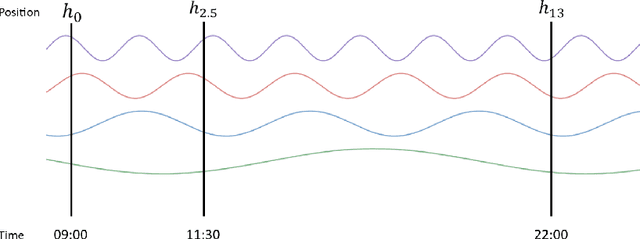

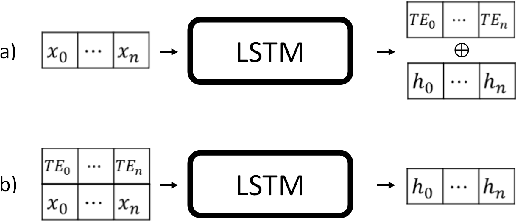
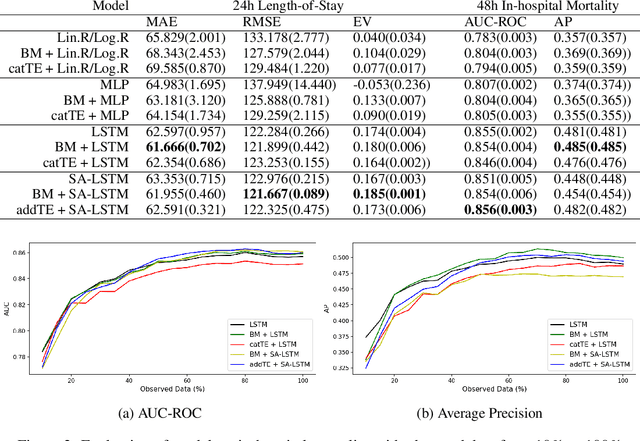
Abstract:Supervised learning with irregularly sampled time series have been a challenge to Machine Learning methods due to the obstacle of dealing with irregular time intervals. Some papers introduced recently recurrent neural network models that deals with irregularity, but most of them rely on complex mechanisms to achieve a better performance. This work propose a novel method to represent timestamps (hours or dates) as dense vectors using sinusoidal functions, called Time Embeddings. As a data input method it and can be applied to most machine learning models. The method was evaluated with two predictive tasks from MIMIC III, a dataset of irregularly sampled time series of electronic health records. Our tests showed an improvement to LSTM-based and classical machine learning models, specially with very irregular data.
Predicting Diabetes Disease Evolution Using Financial Records and Recurrent Neural Networks
Nov 23, 2018
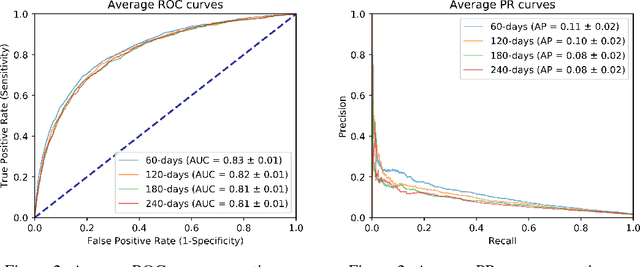
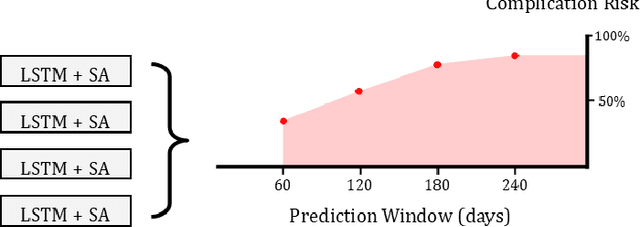
Abstract:Managing patients with chronic diseases is a major and growing healthcare challenge in several countries. A chronic condition, such as diabetes, is an illness that lasts a long time and does not go away, and often leads to the patient's health gradually getting worse. While recent works involve raw electronic health record (EHR) from hospitals, this work uses only financial records from health plan providers to predict diabetes disease evolution with a self-attentive recurrent neural network. The use of financial data is due to the possibility of being an interface to international standards, as the records standard encodes medical procedures. The main goal was to assess high risk diabetics, so we predict records related to diabetes acute complications such as amputations and debridements, revascularization and hemodialysis. Our work succeeds to anticipate complications between 60 to 240 days with an area under ROC curve ranging from 0.81 to 0.94. In this paper we describe the first half of a work-in-progress developed within a health plan provider with ROC curve ranging from 0.81 to 0.83. This assessment will give healthcare providers the chance to intervene earlier and head off hospitalizations. We are aiming to deliver personalized predictions and personalized recommendations to individual patients, with the goal of improving outcomes and reducing costs
 Add to Chrome
Add to Chrome Add to Firefox
Add to Firefox Add to Edge
Add to Edge